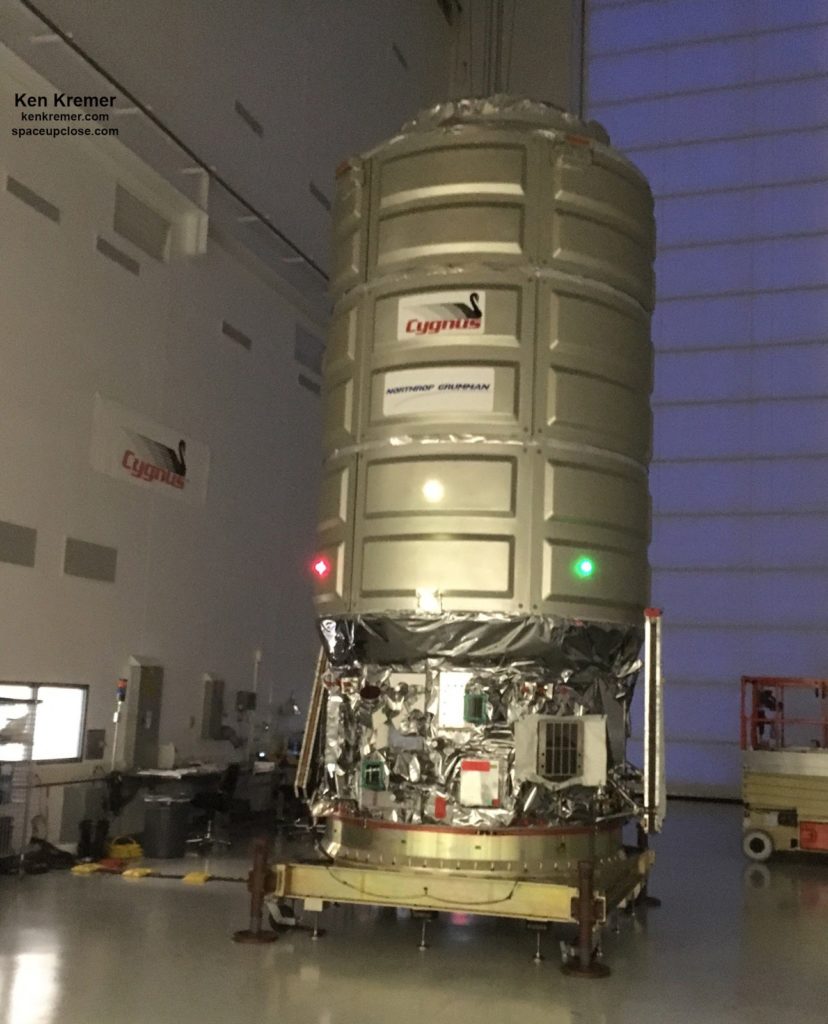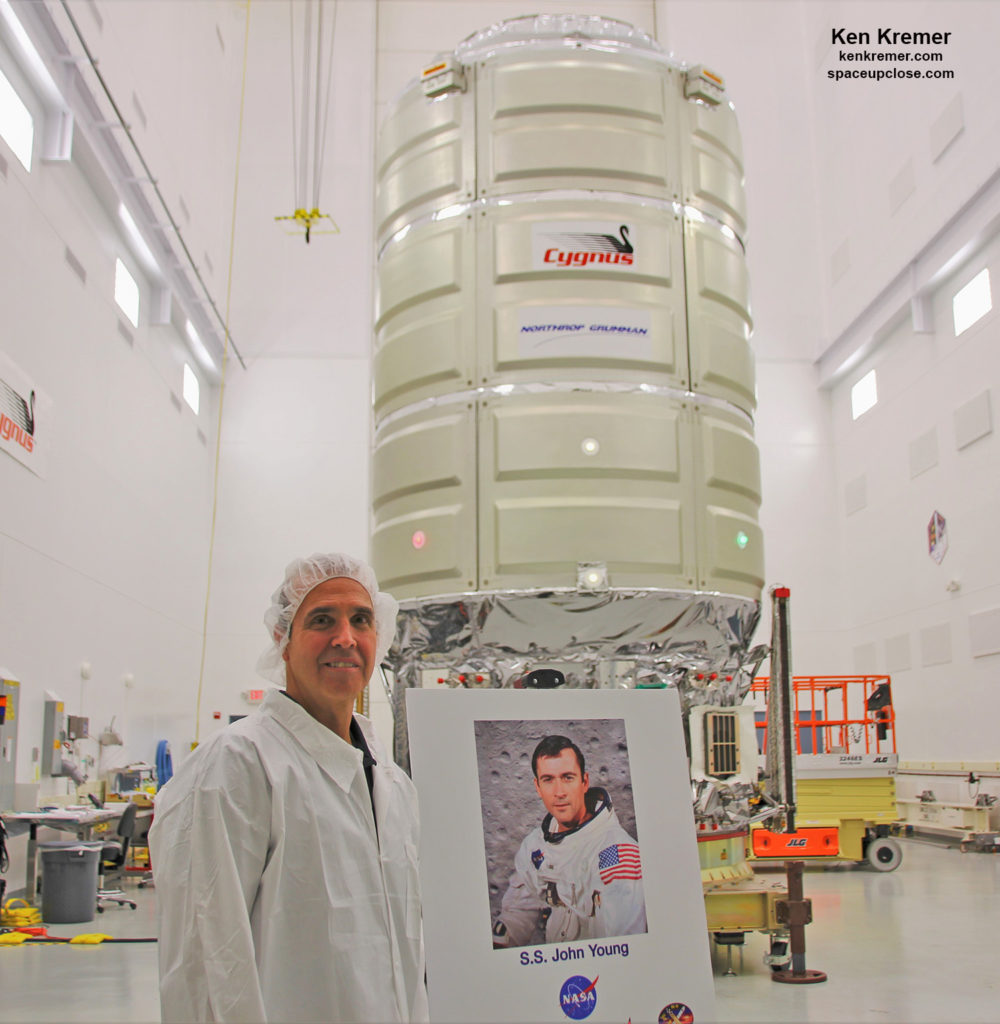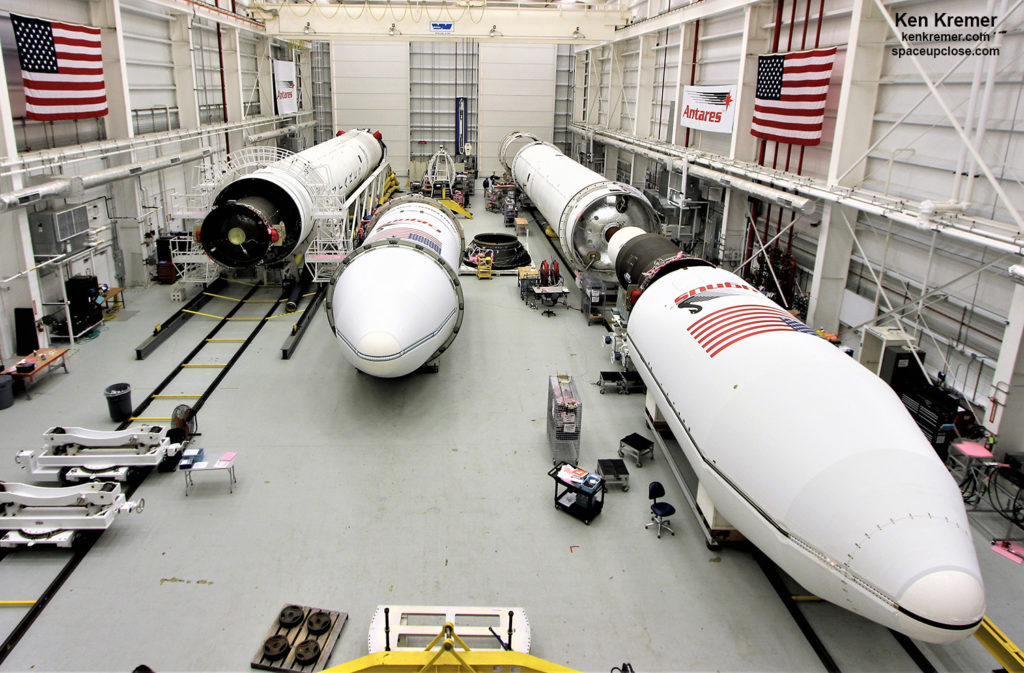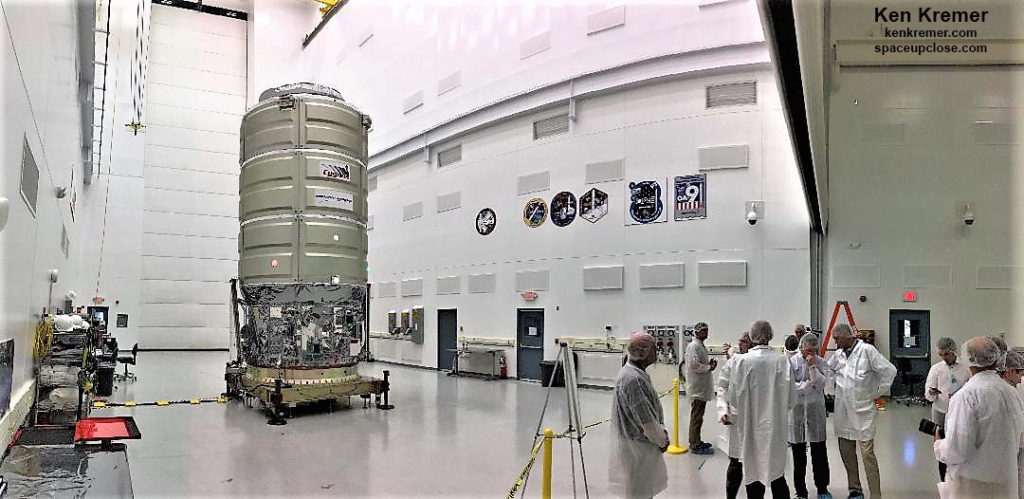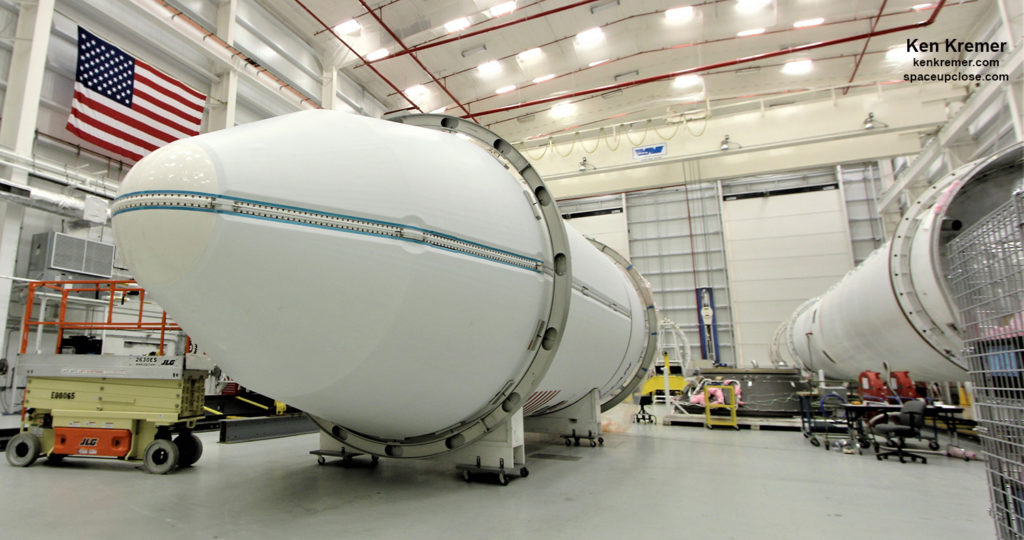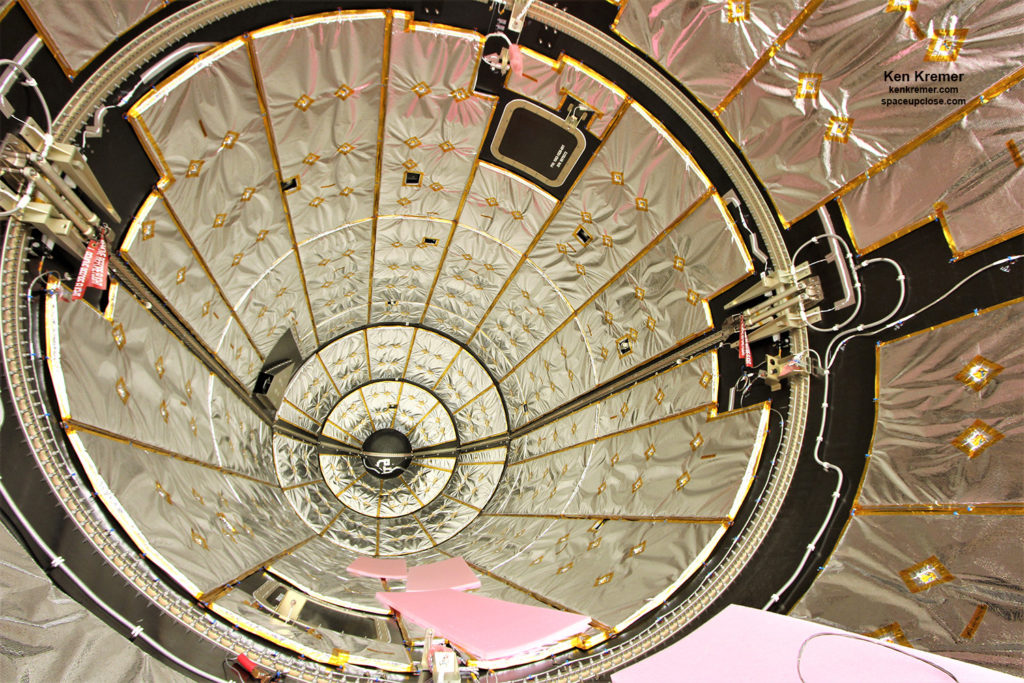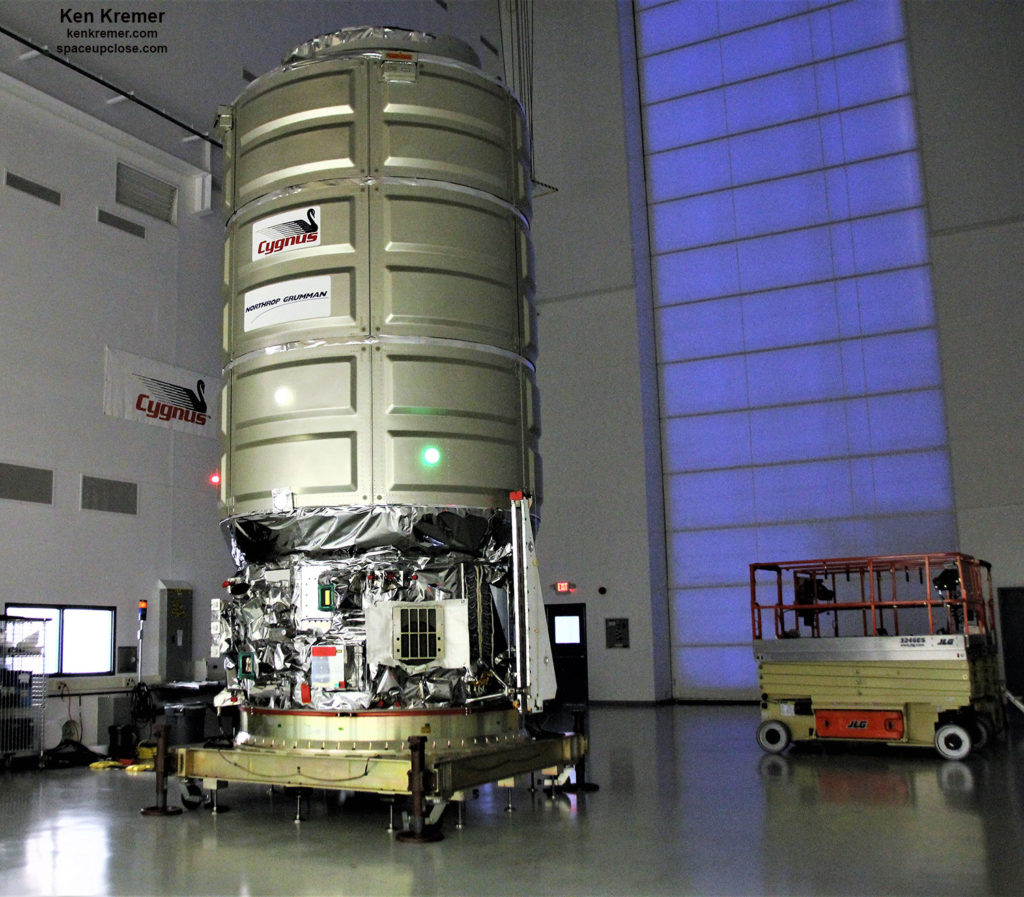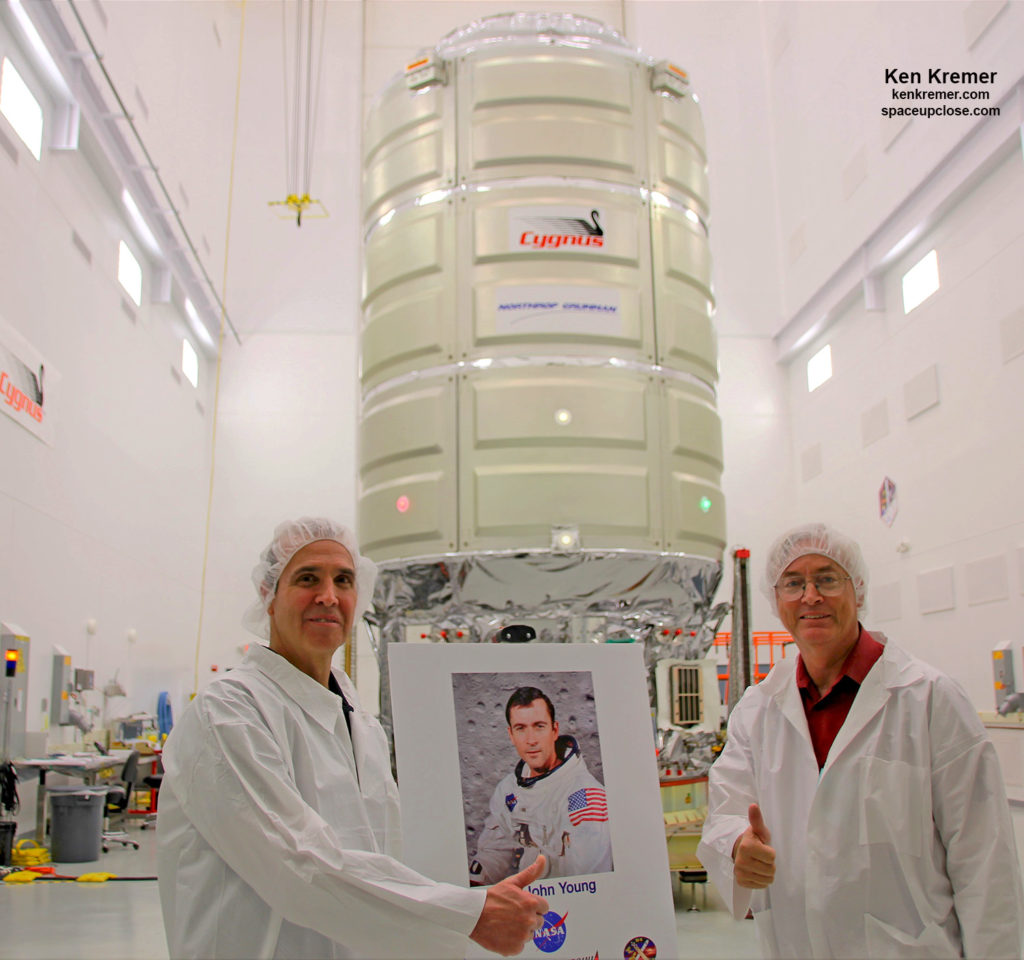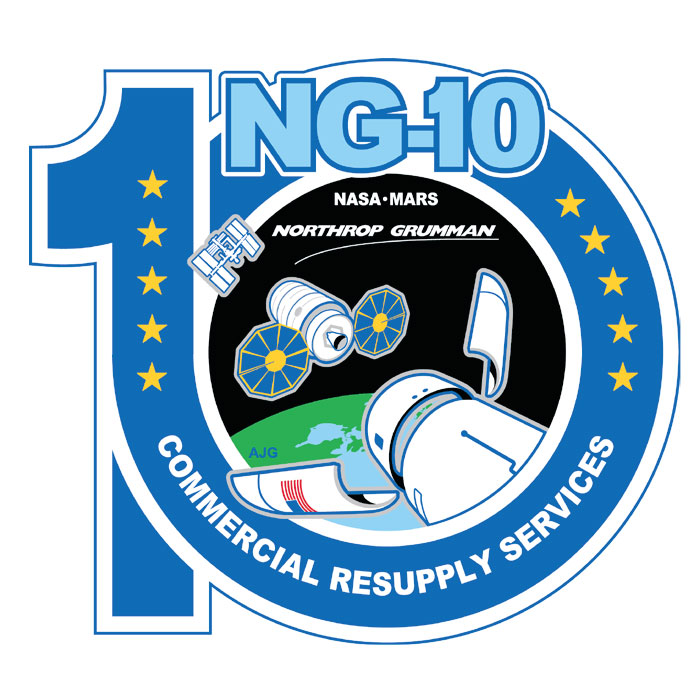Ken Kremer — SpaceUpClose.com — 28 October 2018
NASA
WALLOPS FLIGHT FACILITY, VA – NASA and
Northrop Grumman are deep into “re-planning” the optimum “cargo content” of the next unpiloted Cygnus resupply mission launching to the International Space Station (ISS) in
mid-November – in the wake of the Soyuz crew launch failure emergency earlier
this month from Kazakhstan, explained former Astronaut Rick Mastracchio at
NASA’s Virginia launch base.
Northrop
Grumman is giving NASA the “flexibility they need” to change and optimize the
manifest ahead of the planned Nov. 15 launch of the Cygnus NG-10 supply ship
slated to deliver over 3.7 tons of science and supplies to the reduced crew of 3 living aboard the orbiting research laboratory.
The
“flexibility” comes in response to the aborted Soyuz MS-10 flight carrying a
Russian-American crew that unexpectedly ended prematurely but safely some 34 minutes after liftoff on Oct.
11 from the Baikonur Cosmodrome in Kazakhstan.
“One of the new twists is that with the failure of the
Soyuz launch vehicle last week, we are trying to give NASA as much flexibility
as possible,” said Rick Mastracchio, former NASA astronaut and 4 time space
flyer and current senior director of Commercial Resupply Services for Northrop Grumman, during a media event on Oct. 24 at
NASA’s Wallops Flight Facility attended by news media including Space UpClose. See our photos herein.
“NASA is in a re-planning phase to determine what is the
right gear? What is the right equipment to send up to the space station?”
“Cygnus is all about science and utilization for the
International Space Station.”
Time is of the essence with a spectacular nighttime blastoff
now less than three weeks away for Northrop Grumman’s 10th
contracted cargo mission to the station – and taking place from NASA’s Virginia
launch base located within viewing distance of America’s biggest population
centers.
Mastracchio made the remarks at the dedication ceremony where
Cygnus was named in honor of Apollo 16 moonwalker and six time NASA astronaut
space flyer John Young – inside the H-100 cleanroom High Bay processing
facility at NASA Wallops on Virginia’s eastern shore.
christened Cygnus S.S. John Young NG-10 cargo freighter is currently scheduled to launch aboard the
company’s upgraded Antares 230 version rocket on Thursday November 15 at 4:49 a.m.
EDT from seaside pad 0A at NASA’s
Wallops Flight Facility in Virginia bound for the International Space Station.
Some items on the Cygnus
manifest will change from what had been planned prior to the Soyuz mishap,
Mastracchio told me.
“We are working closely with NASA to give them flexibility
and give them the capability to launch any important gear and equipment that
has to go to the ISS based on that failure,” Mastracchio stated.
“So we
are working closely with NASA to give them that capability.”
The automatic
abort system of the extremely reliable Soyuz booster kicked in exactly as it
was designed to in a split second – and saved the lives of Soyuz MS-10 crew launch comprising NASA astronaut
Nick Hague and Russian cosmonaut Alexey Ovchinin who planned to spend 6 months
aboard the International Space Station as members of the Expedition 57 crew.
prior to joining Northrop Grumman in June 2017.
career Mastracchio served as a long duration ISS crew member during Expeditions 38 &
39 from Nov. 2013 to May 2014 for 187 days and launching aboard a Soyuz capsule– during which time the Cygnus Orb-1 vehicle arrived
at the station delivering 2,780 pounds (1,261 kilograms) of cargo on Jan
12, 2014 following NASA Wallops blastoff on Jan. 9, 2014.
orbit of the Orb-1 mission five years ago, as a NASA astronaut while serving on the
ISS.”
team about a year ago.”
“flexible” approach the Northrop Grumman Cygnus team also modified their
processing procedures to prepare the spacecraft for the Nov. 15 launch.
two separately built major pieces that have to be joined together at NASA
Wallops to make a unified spaceship – a pressurized cargo module (PCM)
manufactured by Thales Alenia in Italy and a service module (SM) manufactured by Northrop Grumman in Dulles,
VA.
preparing the Cygnus vehicle,” Mastracchio elaborated.
things.”
module.”
something in the initial load. But NASA came back and said no changes to the
initial load now. But we are going to
want to make changes in the final loads of cargo.”
Anything specific I asked.
so far we haven’t changed anything specific yet and NASA will let us know soon.”
How will this NG-10
mission profile differ from the prior NG-9 mission launched this past spring in
May 2018?
“In general this mission NG-10 is very similar to the last
one, the 9th Cygnus,” Mastracchio replied.
“Obviously the cargo and supplies varies a bit from mission
to mission depending on NASA’s needs.”
“The big difference here is we might be sending up
equipment to deal with the Soyuz failure.
Clearly there are different science experiments going up now.”
“We load the last cargo about three days before launch.”
Cygnus is then encapsulated in the payload fairing already waiting
in the Wallops Horizontal Integration Facility and integrated with the Antares
rocket. The rocket is then rolled out to the launch pad.
Cygnus will be loaded with cargo up to 3,450 kg (7,605 lb.)
comprising science experiments, research gear,
food, water, spare parts, crew supplies and vehicle hardware to support the Expedition 57 and 58 crews.
“We are on target to launch Antares and Cygnus on Nov. 15
at this time,” Kurt Eberly, Antares program manager Northrop Grumman VP, told
Space UpClose in an interview during the Cygnus dedication event at NASA
Wallops on Oct. 24.
“Of course it always depends on NASA’s requirements which
can change.”
“We are looking to have another good launch on Nov. 15 at
4:49 am, the beginning of a 5 minute launch window.”
Cygnus will deliver
vital equipment, supplies and scientific equipment to the space station as part
of Northrop Grumman’s Commercial Resupply Services-1 (CRS-1) contract with NASA
– totaling 11 cargo flights.
“NG-10 is the next to
last followed by NG-11 next spring under the CRS-1 contract, said Eberly.
“Northrop Grumman also
has been awarded the follow on CRS-2 contract from NASA comprising at least 6
more cargo missions.”
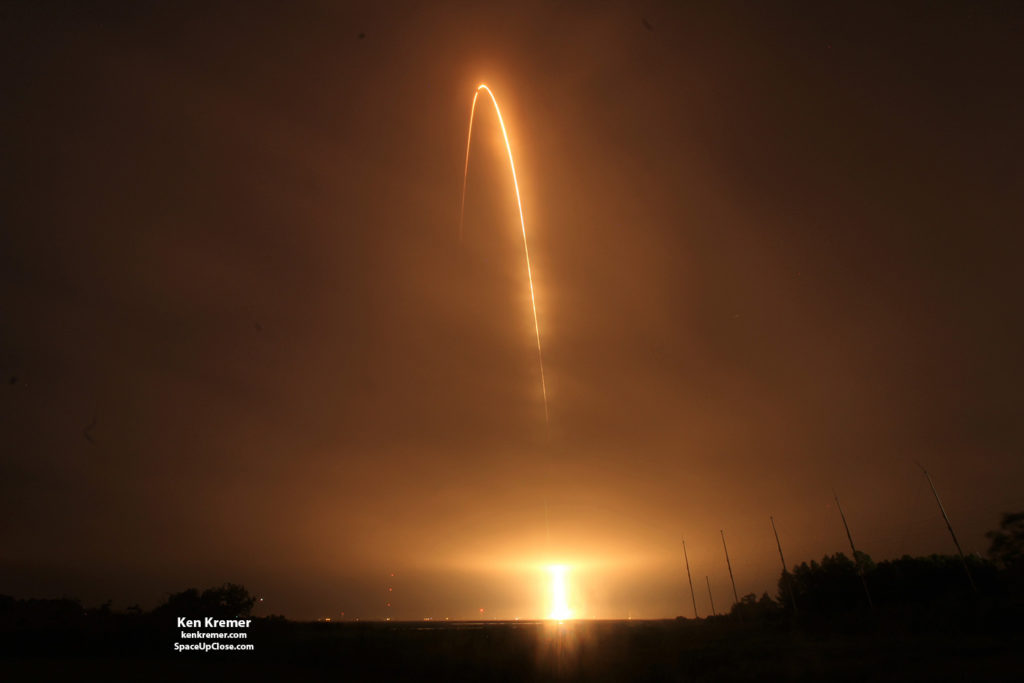 |
| Long duration exposure image showing launch of Orbital ATK OA-9 Antares/Cygnus to the ISS on 21 May 2018 from NASA Wallops, VA. Credit: Ken Kremer/kenkremer.com/SpaceUpClose.com |
To date, Cygnus
spacecraft have delivered more than 23,000 kilograms of cargo to the
International Space Station, and removed 17,000 kilograms of disposable
cargo.
The
prior Cygnus cargo freighter was successfully launched by an Antares 230
vehicle from Wallops on May 21, 2018 on the Orbital ATK OA-9 resupply mission
for NASA before the company merged with Northrop Grumman.
Watch for Ken’s
continuing onsite coverage of NASA, SpaceX, ULA, Boeing, Lockheed Martin,
Northrop Grumman and more space and mission reports direct from the Kennedy Space
Center, Cape Canaveral Air Force Station, Florida and Wallops Flight Facility,
Virginia.
Stay tuned here for Ken’s continuing Earth and Planetary science
and human spaceflight news: www.kenkremer.com –www.spaceupclose.com –
twitter @ken_kremer – email: ken at kenkremer.com
Dr. Kremer is a research
scientist and journalist based in the KSC area.
Ken’s photos are for sale and he is available for lectures and outreach events


